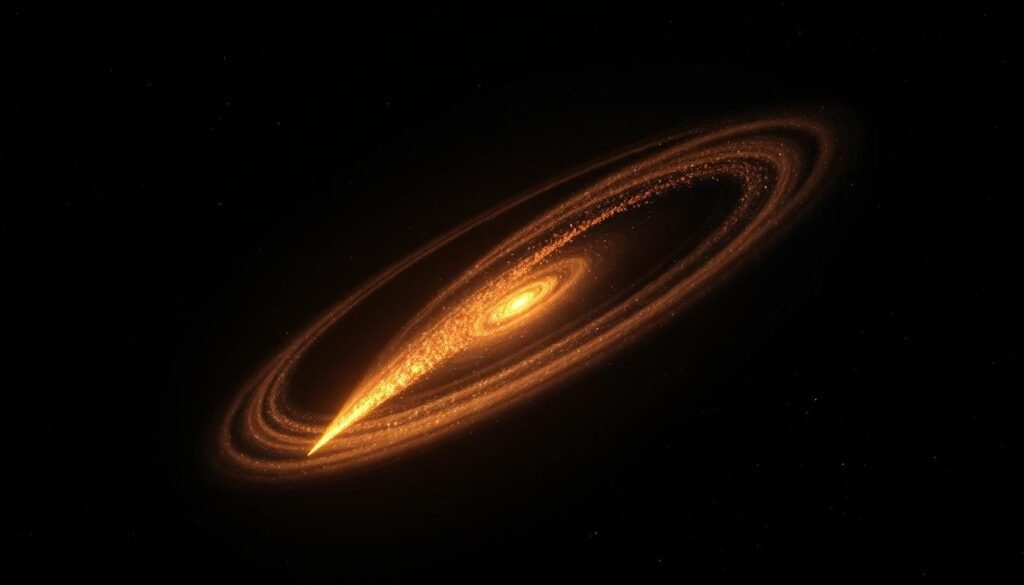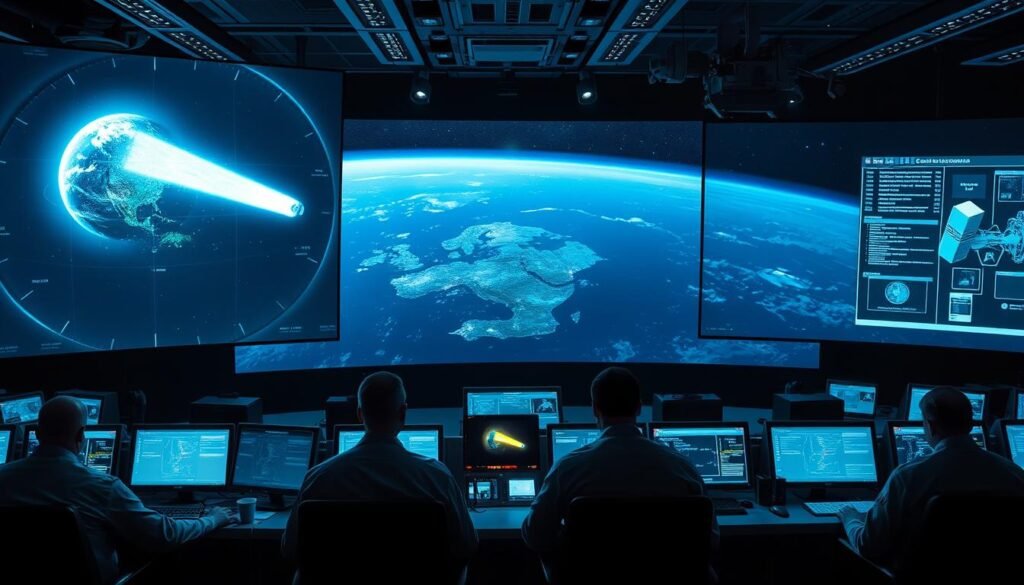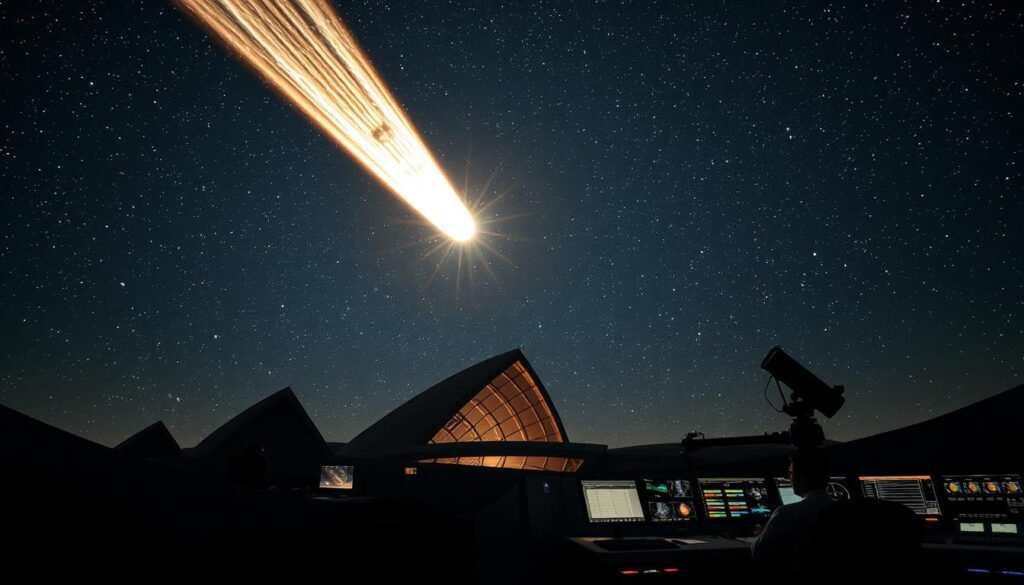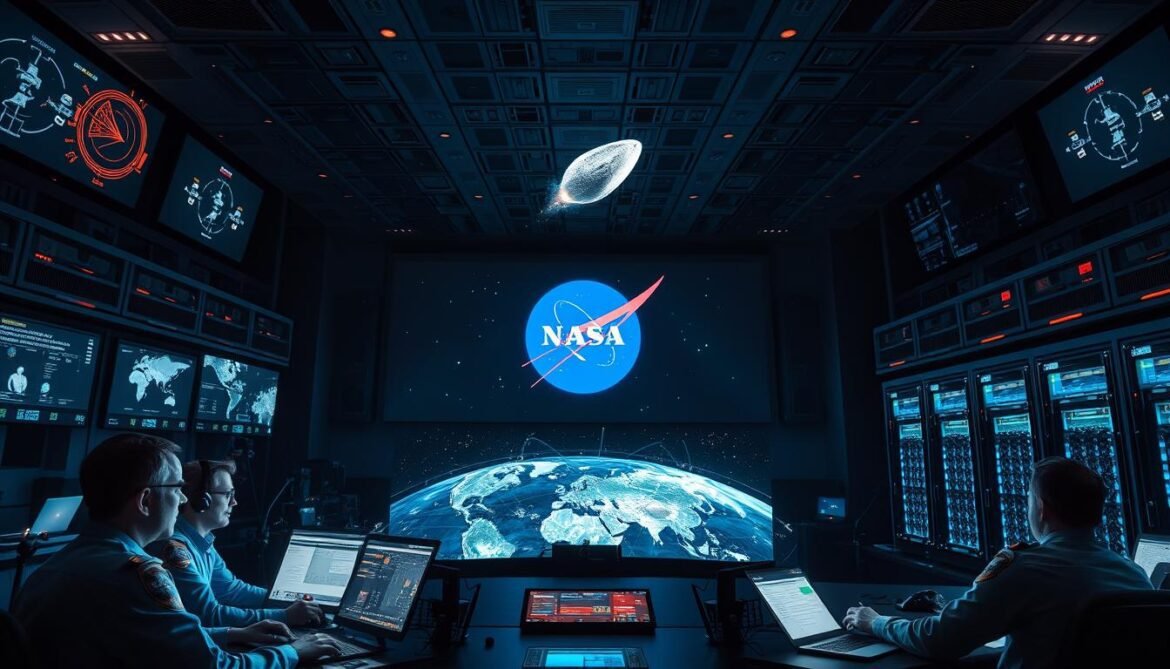What if the object hurtling through our solar system isn’t just another comet? When news broke about the activation of special observation protocols for interstellar visitor 3I/ATLAS, speculation ran wild across social media. Could this be something more than a celestial rock?
The truth involves a dedicated office established in 2016 to handle exactly these situations. Led by Lindley Johnson, this coordination office focuses on finding and tracking near-Earth objects. Their mission is clear: identify potential impact hazards to our planet.
This system represents a careful balance between scientific curiosity and public safety. When unusual objects like 3I/ATLAS enter our neighborhood, special attention is warranted. The agency’s response follows established international networks for asteroid warnings.
Despite sensational claims about “alien vessels,” the reality is more systematic. The activation of observation protocols doesn’t signal immediate danger. Instead, it demonstrates how modern astronomy distinguishes between routine monitoring and genuine threats.
This introduction explores what we actually know versus unverified speculation. We’ll examine why interstellar visitors receive special scrutiny and how scientific institutions separate fact from fiction when extraordinary phenomena occur.
Understanding the Threat: Comet 3I/Atlas and Its Trajectory
When astronomers detected 3I/ATLAS in mid-2025, its unusual path immediately signaled this was no ordinary solar system visitor. The ATLAS telescope system made the initial discovery on July 1, 2025, capturing an object moving at exceptional speed.

This interstellar comet follows a hyperbolic trajectory, meaning it’s just passing through our cosmic neighborhood. Unlike bound objects orbiting our Sun, 3I/ATLAS will continue into deep space after its visit.
Overview of the 3I/Atlas Discovery and Characteristics
Advanced telescope systems revealed surprising composition data. The James Webb Space Telescope found a carbon dioxide-rich coma with remarkably low water content.
Some researchers estimate this comet may be approximately 7 billion years old. That means it could predate our entire solar system.
Key Date Milestones and Observation Timelines
The critical time for observations comes in late october 2025. That’s when the comet reaches its closest point to the Sun around October 29-30.
It will pass at about 1.4 astronomical units from the Sun. The closest Earth approach follows on December 19, 2025, at a safe 1.8 AU distance.
Astronomers will have several months for detailed tracking after the comet re-emerges in early December. This extended observation window provides valuable study time.
The unusual nature of interstellar objects like 3I/ATLAS continues to generate significant scientific interest, as detailed in recent analysis of hyperbolic orbital paths.
NASA Planetary Defense: Structure and Operational Roles
America’s systematic approach to space threats began with congressional action two decades ago. The 2005 NASA Authorization Act created the foundation for today’s monitoring systems.
The Formation and Mission of the Planetary Defense Coordination Office
This legislation led to the Planetary Defense Coordination Office’s establishment in 2016. The office operates within NASA’s Planetary Science Division.
Lindley Johnson serves as the Planetary Defense Officer leading this effort. His team coordinates the search for near-Earth objects larger than 30-50 meters.
The defense coordination office manages the Near Earth Observations Program. This program funds telescope searches and calculates orbital paths.

Collaboration with International Monitoring Networks
Planetary defense coordination extends beyond national borders. NASA participates in the International Asteroid Warning Network.
This United Nations-operated system shares data globally. Such cooperation ensures comprehensive monitoring of potential hazards.
The defense coordination office works with international partners constantly. This network activated when 3I/ATLAS entered our solar system.
Technologies and Strategies in Asteroid and Comet Protection
Scientific advancements have transformed our approach to potential impact risks from asteroids and comets. We now rely on a sophisticated suite of technologies for detection, tracking, and even deflection.
NEO Surveyor, DART, and Other Space Missions
The upcoming NEO Surveyor mission is a critical infrared space telescope. It is designed to find hazardous objects by sensing their heat against the cold space background.
This system will significantly accelerate the discovery of asteroids and comets coming near Earth.

A landmark demonstration in defense science was the DART mission. This project successfully proved that a kinetic impact could alter an asteroid’s path.
Before DART, the NEOWISE telescope provided vital data for modeling impact scenarios. These missions represent a proactive shift in how we handle space threats.
Tracking, Observation, and Deflection Techniques
Tracking relies on coordinated systems like ATLAS and Pan-STARRS. These ground-based networks scan the sky, providing initial data on moving objects.
Sophisticated computational models then predict orbits years in advance. This allows for accurate assessment of any potential impact.
Beyond kinetic impactors, scientists study other deflection techniques. These include gravity tractors and ion-beam shepherding for future threats.
Analysis of Recent Observations, Leaked Footage, and Public Discourse
Recent developments surrounding the mysterious 3I/ATLAS object have created a fascinating intersection of scientific observation and public speculation. This marks the first time an interstellar visitor has triggered such comprehensive monitoring protocols.
Insights from NASA’s Observations and Telescope Data
The International Asteroid Warning Network launched a structured observation campaign targeting the interstellar comet. This represents unprecedented defense coordination for an extrasolar visitor.
Detailed observations have been collected over several months using advanced telescope systems. The scientific response involves characterizing this unique comet through comprehensive data collection.

Controversies Surrounding the Leaked 3I/Atlas Footage
Social media claims about a “large vessel” associated with 3I/ATLAS have generated significant attention. However, analysis of the leaked footage reveals no independent verification exists.
Researcher Avi Loeb characterizes 3I/ATLAS as a potential “black swan event.” He suggests unusual features warrant consideration of artificial origins.
Mainstream science maintains that available data support a natural origin for these interstellar objects. The scientific community emphasizes that extraordinary claims require extraordinary evidence.
This careful analysis distinguishes between verified observations and speculative interpretations. It demonstrates how modern astronomy navigates complex public discourse.
Conclusion
Ultimately, the story of 3I/ATLAS is one of scientific preparedness meeting cosmic curiosity. The activation of specific observation protocols demonstrates a mature, systematic response to rare interstellar objects, not an emergency.
Current data firmly indicates this comet poses no impact threat. The coming months offer a valuable window for gathering more information as it moves away from the Sun.
This event showcases the robust systems developed over many years. These capabilities allow us to study fascinating asteroids and comets while ensuring planetary safety.
While speculation about origins will continue, the path forward relies on verified evidence. The real achievement is our growing ability to detect and understand visitors from beyond our solar system.

